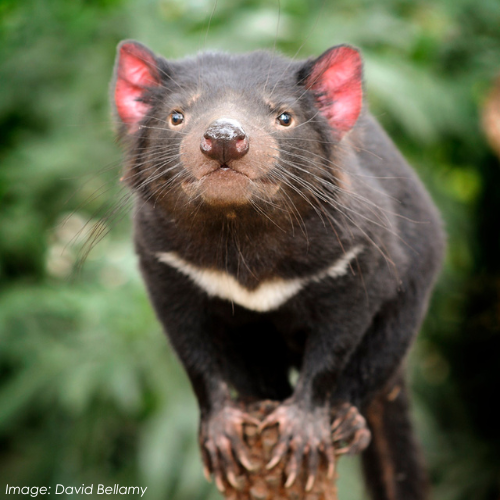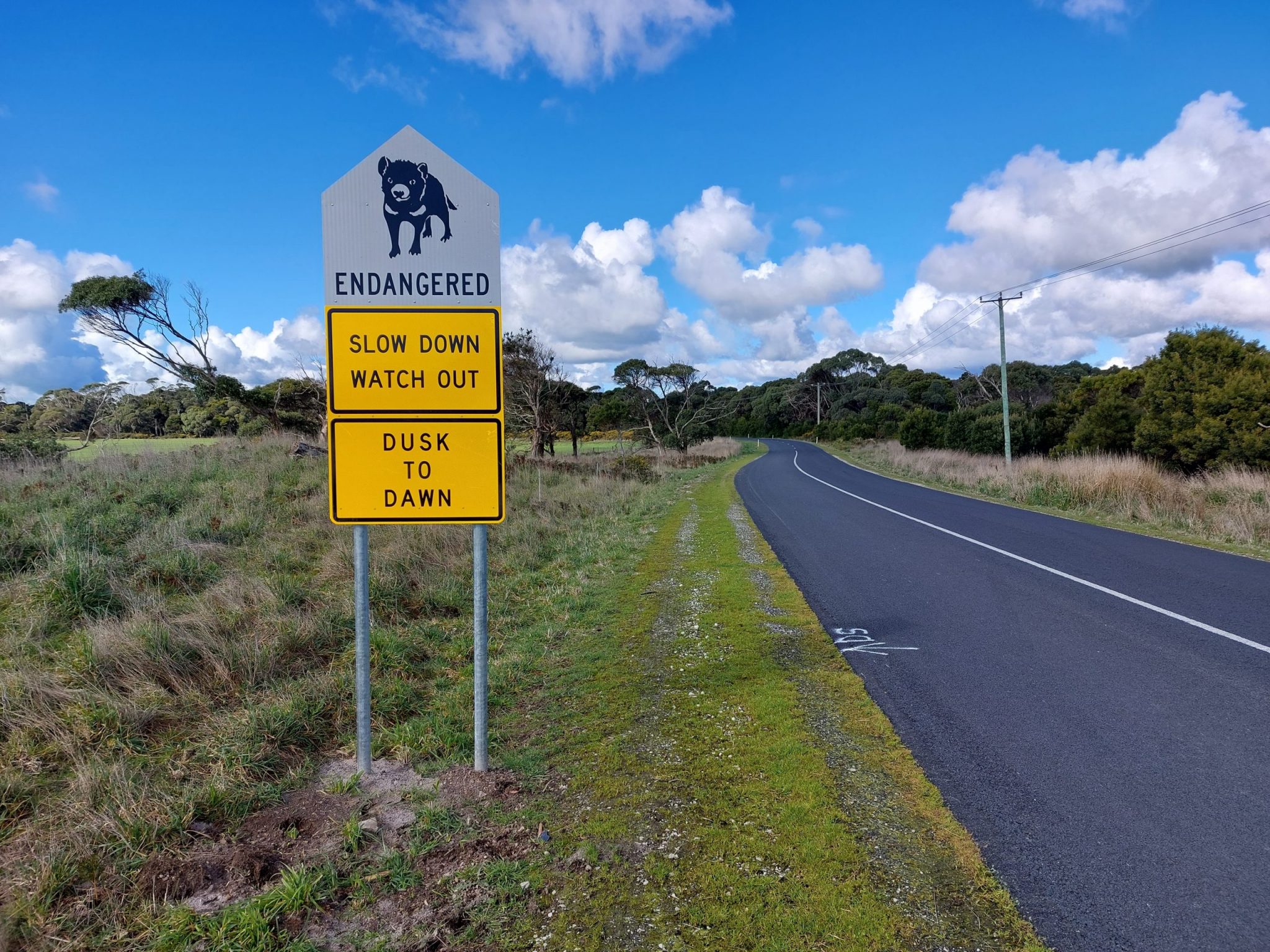

Roadkill data from Dept of Natural Resources and Environment Tasmania


CIRCULAR HEAD ROADKILL MITIGATION PROJECT
Cradle Coast NRM is leading a stakeholder working group established to reduce the number of Tasmanian Devils killed on the roads of the Woolnorth area.
The Woolnorth area supports one of the highest densities of Tasmanian Devils in the state, according to monitoring by the Save the Tasmanian Devil Program (STDP). This is mostly attributed to the continued absence of Devil Facial Tumour Disease (DFTD) in the Woolnorth devil population, and also because there are still large remnants of high-quality devil habitat in the area.
While devils have persisted in the wild across the State, the significant reduction to their population due to DFTD makes the species increasingly vulnerable to the effects of other threatening processes.
Surveys from July 2022 indicate that the Woolnorth population remains stable with no DFTD detected, however, with a comparatively large devil population, comes increased interactions with vehicles.
There is great community concern about the number of Tasmanian Devils (and other vulnerable wildlife) killed on Circular Head roads. Collective action is required to mitigate the threat of roadkill to our iconic devils.
The working group has developed a list of roadkill mitigation activities that we have started implementing.
Observations of Tasmanian Devil roadkill
Residents and road users have been contributing roadkill records to a state-wide database. This allows scientists to assess the scale and location of the problem, and to implement mitigation strategies.
The data collected show a greater number of records on the sections of road that are edged with native vegetation which provides natural devil habitat.
The analysis of the roadkill data tells us that there has been an increase in roadkill records in recent years, but we don’t know why that is.
There is a strong seasonality to the dataset. In the summer months, devils move around more, especially young devils leaving their dens and finding their own territories. This makes them more susceptible to interactions with vehicles.
To contribute records of roadkill, use the Roadkill Reporter app. If it is safe to stop, please remove the dead animal from the road to reduce the risk of predators being hit. Check the pouch for young. Injured or orphaned wildlife should be reported to Bonorong Wildlife Rescue Service on 0447 264 625 https://www.bonorong.com.au/wildlife-rescue-service
Circular Head Devil Roadkill Mitigation Fund
The CIRCULAR HEAD DEVIL ROADKILL MITIGATION FUND has been established to financially support activities designed to reduce roadkill and raise awareness of the importance of the Circular Head devil population.
Private investment is being sought to enable these roadkill mitigation initiatives to be implemented. Some roadkill mitigation activities have been identified as immediate priorities, and some may be proposed by the working group in the future.
- Community education and awareness campaign
- Development of campaign communications materials
- Installation of campaign signage
- Actions to reduce driving speeds on Woolnorth Rd
- Roadkill removal management
- Roadside slashing
- Virtual fencing extension
- Improved monitoring of roadkill and monitoring the effectiveness of fund activities
- Other innovative roadkill reduction solutions
Working Group members
Circular Head Council, Cradle Coast NRM, Department of Natural Resources and Environment, Community volunteers and wildlife carers, Van Dairy, Fonterra, TRT Pastoral, Tasmania Police, 40 South Dairies, Department of State Growth, Woolnorth Renewables, Office of Hon Roger Jaensch MP, Kennaook / Cape Grim Baseline Air Pollution Station, West by North West Tourism.
